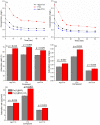Recovery of tetrodotoxin from pufferfish viscera extract by amine-functionalized magnetic nanocomposites
- PMID: 37323433
- PMCID: PMC10267608
- DOI: 10.1039/d3ra02166a
Recovery of tetrodotoxin from pufferfish viscera extract by amine-functionalized magnetic nanocomposites
Abstract
Tetrodotoxin (TTX) has been widely used in pharmacology, food poisoning analysis, therapeutic use, and neurobiology. In the last decades, the isolation and purification of TTX from natural sources (e.g., pufferfish) were mostly based on column chromatography. Recently, functional magnetic nanomaterials have been recognized as promising solid phases for the isolation and purification of bioactive compounds from aqueous matrices due to their effective adsorptive properties. Thus far, no studies have been reported on the utilization of magnetic nanomaterials for the purification of TTX from biological matrices. In this work, an effort has been made to synthesize Fe3O4@SiO2 and Fe3O4@SiO2-NH2 nanocomposites for the adsorption and recovery of TTX derivatives from a crude pufferfish viscera extract. The experimental data showed that Fe3O4@SiO2-NH2 displayed a higher affinity toward TTX derivatives than Fe3O4@SiO2, achieving maximal adsorption yields for 4epi-TTX, TTX, and Anh-TTX of 97.9, 99.6, and 93.8%, respectively, under the optimal conditions of contact time of 50 min, pH of 2, adsorbent dosage of 4 g L-1, initial adsorbate concentration of 1.92 mg L-1 4epi-TTX, 3.36 mg L-1 TTX and 1.44 mg L-1 Anh-TTX and temperature of 40 °C. Interestingly, desorption of 4epi-TTX, TTX, and Anh-TTX from Fe3O4@SiO2-NH2-TTX investigated at 50 °C was recorded to achieve the highest recovery yields of 96.5, 98.2, and 92.7% using 1% AA/ACN for 30 min reaction, respectively. Remarkably, Fe3O4@SiO2-NH2 can be regenerated up to three cycles with adsorptive performance remaining at nearly 90%, demonstrating a promising adsorbent for purifying TTX derivatives from pufferfish viscera extract and a potential replacement for resins used in column chromatography-based techniques.
This journal is © The Royal Society of Chemistry.
Conflict of interest statement
There are no conflicts to declare.
Figures











References
LinkOut - more resources
Full Text Sources

